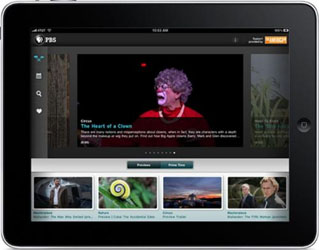5 Reasons to Say Goodbye to PR Worker
Most would agree that Public Relations (PR) – a profession for the fuddy-duddy – could never prove its worth for businesses striving to pull off some competitive advantages. With ad hoc impact measurement procedures and ordinary workers, PR agencies mostly believed in hoodwinking the companies that hired PR services thinking these are cheaper as compared to ad-based promotions for their brands.
By Rakesh Raman
In fact, it was a tacit arrangement of mutual convenience and neither side was willing to shake it out. As a result, businesses suffered when they didn’t get value for their money spent on PR work.
But it was then. Now with the proliferation of digital media tools, slowly the shoddy work of PR companies is getting exposed. And now is the time for companies to get rid of them and save money being wasted on PR services.
Here are the 5 reasons for you to kick out any kind of internal and external PR workers and adopt some cost-effective digital methods to convey your corporate and product messages.
1. Subject Knowledge: Almost all PR people are clueless about the products and services that they try to promote. How can they even think of creating proper messaging without understanding the market and the related offerings in that market?
For example, if you don’t understand the finer nuances of cloud computing, you’re not supposed to provide PR services to a tech company offering cloud solutions. But since PR outfits never refuse any work irrespective of their competence, the results are ordinary to average. Without subject understanding, they’re not in a position to customize content for getting wider coverage in the media. Content customization is inevitable when you have to deal with a plethora of media platforms. Do PR agencies understand this concept?
Remedy: Instead of hiring expensive PR services, companies can do this work at a fraction of the cost by creating small in-house teams of technical and language professionals and training them appropriately.
2. Information Distribution: Earlier, when Internet and e-mail were not quite available, PR companies used young boys – and mostly young girls – to do the dirty legwork of delivering press releases door-to-door at media houses. While these were nothing more than postal services, they were charging heavy money from companies.
But why now when Internet tools are available? Many PR agencies are still sending people for these visits called ‘media rounds.’ These are totally meaningless as these PR people are so raw that most can’t even meet the journalists, let alone convincing them to use the information in their publications.
On the other side, they’re not able to use e-mail effectively, as they don’t understand how to write a courteous opening note for their press releases, etc. They simply throw press releases in journalists’ mail boxes without even addressing them properly.
As PR people lack training on all fronts, they’re again trying to cheat you if they say they can get your message published with their personal relations with journalists. Today, relations, etc. don’t matter at all, as these are unprofessional ways of working. Now, your strategies to cover the larger media universe can bring you better results.
Procter & Gamble Company, for example, revealed that more than 350 bloggers participating in its social purpose Internet campaign, the GIVE HEALTH Clean Water Blogivation, reached the company’s goal of providing 100,000 days of clean drinking water to people in developing countries. The program invited bloggers from around the world to give space on their blogs for a special widget through which readers clicked to donate water. (Read: Can Bloggers Provide Clean Drinking Water?)
A PR agency is utterly useless if it can’t give you such professionally constructed strategies.
Remedy: Companies must not spend even a single penny on plain message distribution that traditional PR companies do. They can create a small database of target media properties as well as bloggers and send them their messages through professionally written e-mail messages. For better results, they can subscribe to reliable online press release distribution services, as leading media companies and journalists prefer to take information from these established online services. So, you don’t need any PR agency.
3. Communications Skills: For an experiment, you can test the writing and communications skills of PR people. Ask them to write a boilerplate or a communications note for media consumption. Most won’t be able to write even three straight sentences. Their writings need multiple iterations and corrections as it happens with a school child. How do you expect such people to make the communications plan for your brands? Neither they have language skills nor do they understand media requirements.
While PR companies are not fully equipped to handle new-generation brand communications work, vendor companies must use internal or specialized skills to attract consumers. And that’s what automaker Toyota is doing. ‘Toyota Friend’ will use Salesforce Chatter, a private social network used by businesses, to communicate about Toyota’s electric vehicles (EV) and plug-in hybrid vehicles (PHV) due in 2012.
Salesforce.com and Toyota have formed a strategic alliance to build Toyota Friend, which will be a private social network that connects Toyota customers with their cars, their dealership, and with Toyota. (Read: Toyota Using Salesforce for a Private Social Network)
A traditional PR company can’t even think at this level. So, why do you want to carry dead weight with your company that may already be facing cost-cutting challenges?
Remedy: It’s always better to use your internal language and technical resources for all communications purposes. Even today most companies are creating the press releases themselves – the work that PR companies are supposed to do. Alternatively, you can create a panel of communications experts who may be occasionally hired for individual jobs instead of paying permanently to a PR company. For innovative initiatives like Toyota’s, you can join hands with some specialized companies providing dedicated communication solutions.
4. New-Media Interaction: Companies must understand that the entire mass communications ecosystem has undergone a major shift with the proliferation of new-media including social media channels. Most PR companies have failed to keep pace with the changing times. They’re still using archaic methods to create their communications that have become a pain in the neck for target readers including journalists.
An unsaid rule of new media, for instance, is to say maximum in minimum number of words. But look at the press notes that PR companies are releasing on behalf of their customers. They are still text -heavy and look like the chapter of a book with huge paragraphs of irrelevant text and executives’ quotes.
Such PR companies lack skills to survive in the new-media game and trying to use old-media rules in digital media space. Obviously, the results will be disastrous.
Companies must know that today many traditional media companies are taking the digital route to deliver their content. The current trends indicate that print publications and television media are headed for the graveyard of those business products that have completed their journey in the corporeal world.
Example: As part of its digital transformation, the iPad app of Reader’s Digest will offer editorial pages from the printed edition, including “Digest” section organized by theme (health, work, personal finance, travel, family, food, and books). (Read: Reader’s Digest Gets a New Reader: iPad)
Moreover, news and information supplier CNN says its CNN App for iPad is now available on the App Store. The CNN App is designed to provide users with an immersive and visual news experience that takes full advantage of iPad’s expansive real estate and Multi Touch interface. (Read: When iPad Tells You the CNN Story)
So new-media or Web-based online bytes will get increasingly consumed by people. The same is revealed by a new survey that says traditional media is in trouble. (Read: Newspapers, TV on Deathbed; Online in Baby Bed)
Can you name a PR company that has transformed itself to create communication campaigns around such digital platforms targeting new generation of consumers? Perhaps, you can’t.
Remedy: Message writing and message customization are keys to convey your messages successfully on new-media channels. You should use your own resources for creating these messages regularly. This will be an effective and also a cost-effective solution. PR companies don’t possess these skills.
5. Impact Measurement: Companies must not get impressed by the so-called impact reports carrying reproduction of printed material with complex charts and graphs that PR companies bring to justify their fees. Those are meaningless today, as the new impact measurement parameter is the amount of recall and consumer engagement that a communications campaign can generate. The payment to a communications or PR agency – if you want to hire it – should be performance-based like it happens for online ad payments, which are based on CPC, CPM, CPL, CPA parameters, etc.
And there could be a separate dipstick to measure the level of engagement on social media platforms. For example, Guinness World Records recently honored Oreo as the first brand to attempt – and set – the Guinness World Records mark for the “Most ‘likes’ on a Facebook post in 24 hours.”
While the Oreo reign as a social media record holder may be short, the company says, Oreo fans around the world rallied to help their favorite cookie become the world’s “Most Liked.” (Read: Which Brand Got Most ‘Likes’ on Facebook?)
The PR efforts are futile if they can’t bring you this kind of tangible publicity that can be measured empirically.
Remedy: As a company, you must discard all old-style impact measurement methods used by PR agencies to bamboozle you into thinking that your brand is getting market acceptance. Those were false methods. Today, you can leverage new media and social media to promote your brands with greater impact at the fraction of cost that PR agencies have been taking out of your pocket.
Now, there’s nothing called PR services that could be sold in the market. This work needs to evolve under some different nomenclature – may be integrated communications companies that use multiple platforms to promote your brands with measurable results. PR as an isolated service has no place in the current business world driven by digital technologies.
The new rules in the digital world would look like the Tower of Babel to PR pros used to archaic ways of working. But companies can be careful. It will always be better for them to create in-house communication resources of “really” qualified people. A person, who can’t write properly, can’t be a PR person. So, companies can dump all such external as well as internal PR workers and save money for other important tasks.
The sooner the better.
By Rakesh Raman, the managing editor of Raman Media Network.






That is the problem with the thought that human interaction is not necessary, I am studying for Public Relations. I think maybe these companies would rather use machines that have no compassion or conscious.